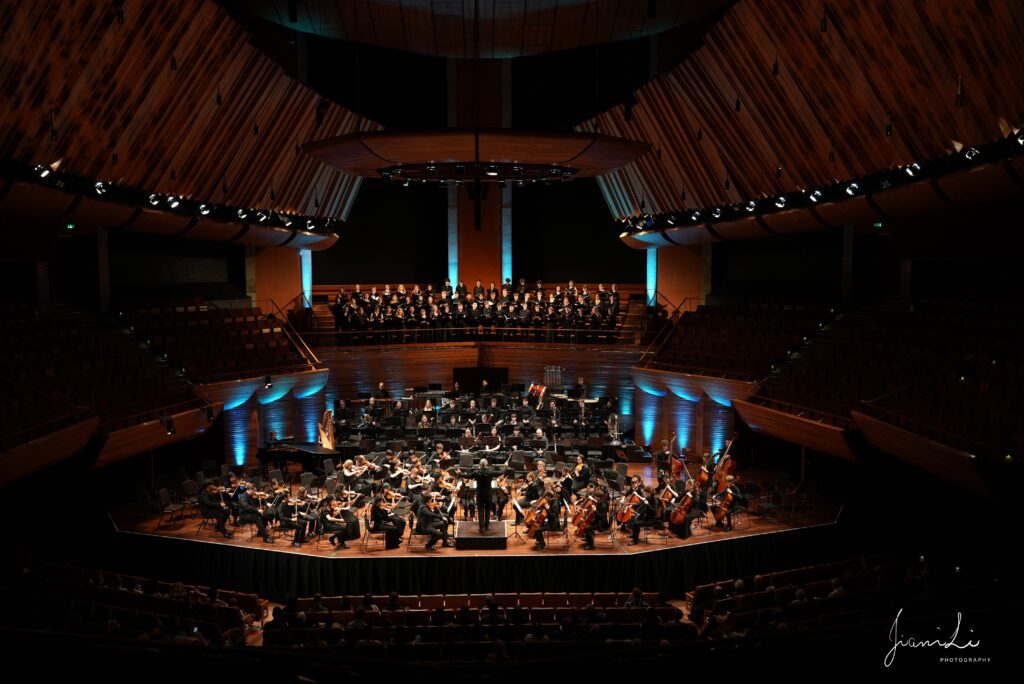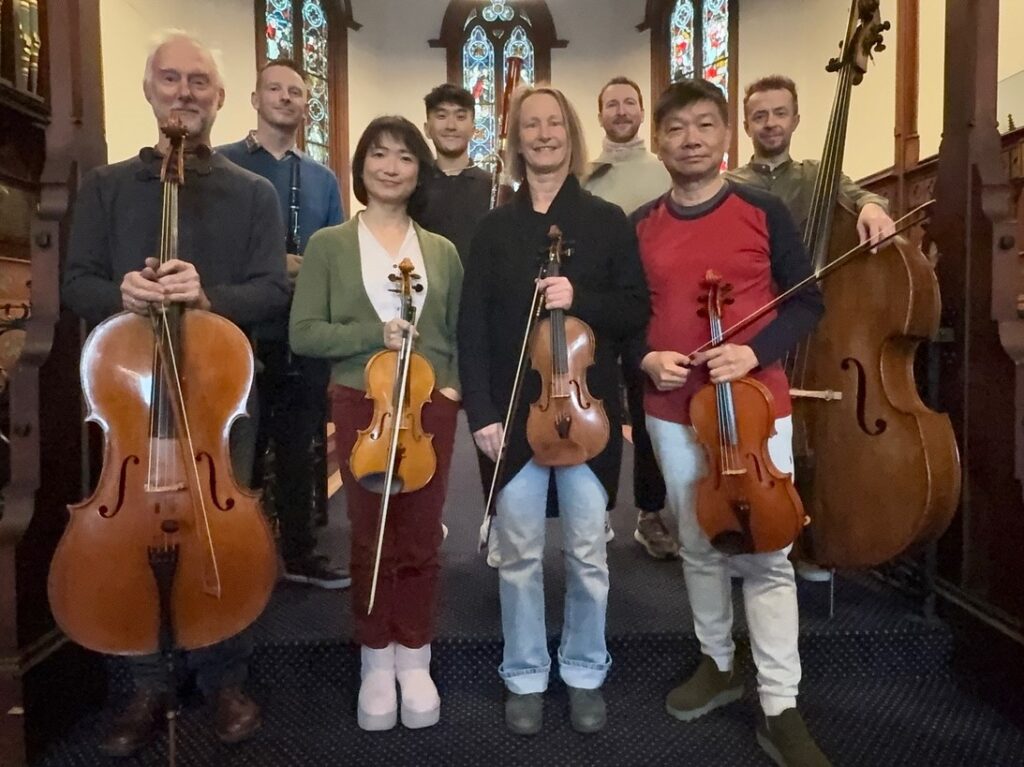THE MAORI SIDESTEPS
Jamie McCaskill, Cohen Holloway, Jerome Leota and Kali Kopae (performers)
Director: Jonathon Hendry
Producer/Lighting Designer: Sonia Hardie
Gillian Eva Boyd: Audio Engineer
Gabriella Eaton: Lighting Operator
Circa Theatre, I Taranaki St, Wellington
29th October 2025 (until Saturday 1st November)
I still remember the incredible excitement generated by the announcement back in early 1960 on our local radio station (2ZA Palmerston North) that there was going to be a special broadcast that evening, something which shouldn’t be missed! Great was our family’s expectation as my parents tuned in on our little monophonic radiogram to something that had the “feel” of a kind of nation-wide news broadcast.
It turned out to be part of a “Showtime Spectacular” that had previously been recorded at the Pukekohe Memorial Hall, and featured a song written by Gerry Merito, a member of the popular all-Maori Howard Morrison Quartet. It was a parody of an existing song recorded by Lonnie Donegan and his skffle group “My Old Man’s a Dustman”, but this was a protest song at the All Black team’s selection in 1960 of a touring team to South Africa with no Maori players, one that was called “My Old Man’s an All Black”.
Sporting ties with South Africa during the republic’s apartheid regime of course became increasingly debated over the years, culminating in the mass protests and scenes of civil unrest during the 1981 Sprigbok tour of New Zealand, which caused serious division up and down the country. But actual protests began in real earnest in 1960 with the NZ Rugby Football Union’s announcement of a no-Maori players touring team.
Merito’s song was described as “a bitter-sweet parody” of Donegan’s song – though it used humour to make its point, with comic asides thrown into the mix the song most definitely had an air of protest about it. I read, much later, about the occasion, recorded at that Pukekohe concert, with the doors of the Hall locked to prevent the audience leaving during recording. By 1 a.m. the producer was satisfied with the “take” and the by then restless audience was released to go home. The rest is history – the disc that was made from the occasion sold 60,000 copies – an amazing number for 1960!
My first reaction upon arriving home from this Circa Show last night was to find and play (You Tube is simply amazing!) the recording of this occasion: there it was! –
“Oh, my old man’s an All Black,
He wears the silver fern,
His mates just couldn’t take him
So he’s out now for a turn.
And so on, to the last verse: –
Well the All Black team is leaving / And the best of luck to them
And if they find things tricky/ They’ll have to play like men
Cos the Springboks will be watching /from Transvaal to Cape Town
That team that ain’t got Horis/ To score their last touch down”
That same history, with all of its “of-its-time” and “we’ve moved on from that” patter, if anything intensifies its integral power in the relistening, along with those comic asides that gained laughs while making a point:
Morrison: “I say, Jerry, my boy, uh – I suppose your Old Man’s a little disappointed his mates left him behind – is that right?”
Merito:”Well, actually, Howard, he wasn’t “cravin’”to go…..”
And then there was the concluding patter, which actually got the biggest laugh –
”Fee-fee Fi-fi Fo-fo Fum….. there’s no Horis in that scrum!”
I mention these things because for me they were the stuff of connections and resonances made last might at Circa Theatre by these amazing performers, “The Maori Sidesteps” which completely overtook my receptivities to an extent for which I wasn’t prepared. Quite a few people at the performance who seemed to be roughly of my age group would have shared these memories and had similar thoughts and reactions – but many others were obviously younger, and ready instead to resonate with enjoyment of the group’s ability to connect as strongly with contemporary issues involving Maori and Pakeha interaction. So it was one of the show’s strengths that the performers could reach out and “touch” such a variety as was in its audience.
The group paid homage to Howard Morrison and his Quartet (cheekily called a “quintet” by somebody onstage last night!) making amends for what they called the “All Black” song’s “parody of a parody” by then giving us a spirited account of another of the original Ouartet “parody” songs, “The Battle of the Waikato” (which “Maori Sidesteps” leader Jamie McCaskill significantly updated by calling it “A New Zealand Land Wars” song – actually, a long-overdue characterisation!)
While the old recordings still bear witness to the group’s outstanding musical and charismatic performance qualities, these were here remarkably echoed by this evening’s beautifully sung and readily engaging set of performances, adroitly mixing older standards such as “I believe” and “Wonderland by Night” (echoes of another outstanding Maori group, the Hi-Marks) with older Te Reo songs like “Hine e Hine” (beautifully sung by Kali Kopae) and a handful I didn’t know but couldn’t help but resonate to all the more. And, though remaining intrigued as to its inclusion, I found myself enjoying the famous Donizetti aria “Una furtiva lagrima” from the opera L’elisir d’amore in Cohen Holloway’s surprisingly prodigious (if somewhat “tenor-in-the-shower”) rendition!
So, on musical terms alone, the show is a knockout! However it also delivers in a way we in Aotearoa New Zealand have been sadly lacking of late, of satirising the antics of our political leaders (whose outrageous recent behaviour seems to have induced a kind of stupefaction here akin to the late satirist Tom Lehrer’s comment re the US political scene that “satire became redundant when Henry Kissinger got the Nobel Peace Prize!”). We need our own Tom Lehrers even more desperately at present – our cartoonists are doing what they can within the constraints of a right-wing-dominated print media at present, but we could do with far more “calling out” of the kind the “Maori Sidesteps” performers demonstrated for us so richly and satisfyingly last night – and judging by the audience reactions to sequences like a game show’s enabling its contestants to “Win back Your Land”, and all-too-resonant impressions of bigoted talkback listeners airing their racist viewpoints, such satire has vatfuls of untapped resource “out there” waiting for things like this to rush in and fill the vacuum!
The impression left at the end of it all was of the effervescence of the performers and their modus operandi, caused not by means that might cause further divisiveness, but by humour and as much self-deprecation as criticism of others, by alternating long-range vision with mirrors, so that people become as used to laughing at themselves as passing judgement upon others. This quality was brought out by things in the show like the Sidesteps’ hilariously knockabout depiction of our own Creation myth in the almost Monty Pythonesque separation of Rangi and Papa, and then the dispersal of the “ Seven Eyes” that make the Matariki constellation.
Again, in every set of truths a modicum of banter and even disrespect helps tease out the true fibres – and the show reiterates this view of things in Aotearoa, weaving threads through these “true fibres” with a sure touch. Right from an opening , beautifully-harmonised waiata mentioning the “seven canoes” (I think I registered most of the names), another song urging the participants to “work for your consideration on your vowels’ pronunciation”, to the amusing irreverence of Prince Tui Teka’s “My ding-a-ling” song, there’s that all-important and communicative leveller of “fun”.
So, Ka pai te mahi! (Well done!) The Maori Sidesteps make one feel better for the awareness they bring out as to who we all can be!
I pa o matou ngakau ki tou aroha! (Our hearts were touched by your love).
 WYO/WYS/WYC at the Michael Fowler Centre, October 2025 – photograph: Jiani Li
WYO/WYS/WYC at the Michael Fowler Centre, October 2025 – photograph: Jiani Li Aroha String Quartet and friends Photo: Zhongxian Jin Back row: Nick Walshe (clarinet), Justin Sun (bassoon), Alexander Hambleton (horn), Oleksandr Gunchenko (double bass)
Aroha String Quartet and friends Photo: Zhongxian Jin Back row: Nick Walshe (clarinet), Justin Sun (bassoon), Alexander Hambleton (horn), Oleksandr Gunchenko (double bass)